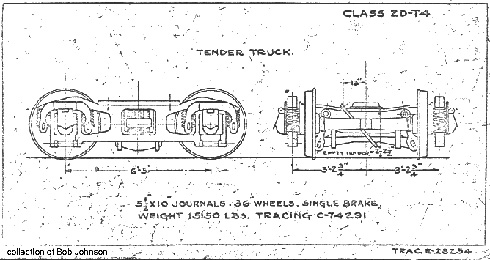


Framed or unframed, desk size to sofa size, printed by us in Arizona and Alabama since 2007. Explore now.
Shorpy is funded by you. Patreon contributors get an ad-free experience.
Learn more.

- Details, Details
- What's that building to the left of the tower?
- Coal Barges
- Bromo-Seltzer
- Inner harbor
- The Basin
- What a headache!
- Giant stepladder?
- Baldwin 62303
- Baldwin VO-1000
- Cold
- No expense spared
- Tough Guys
- Lost in Toyland
- And without gloves
- If I were a blindfolded time traveler
- Smoke Consumer Also Cooks
- Oh that stove!
- Possibly still there?
- What?!?
- $100 Reward
- Freeze Frame
- Texas Flyer wanted
- Just a Year Too Soon
- WWII -- Replacing men with women at the railroad crossing.
- Yes, Icing
- You kids drive me nuts!
- NOT An Easy Job
- I wonder
- Just add window boxes
Print Emporium
Rail Disaster: 1933
![Rail Disaster: 1933
GRAVE OF MUD
WASHINGTON, Aug. 25, 1933 -- While thousands worked to overcome the havoc wreaked by the storm in the Capital, 300 trainmen struggled with the wreck of the Crescent Limited. The crack extra-fare express was hurtled yesterday from the tracks of the Pennsylvania Railroad when flood waters undermined the central abutment of the bridge over the Eastern Branch [Anacostia River], just inside the District. All day and all night the crews of railroad men worked, first with acetylene torches to clear debris from the approaches to the bridge, and then with three cranes to lift aside the wrecked cars. Late in the evening a derrick lifting the crushed engine from a grave of mud uncovered the body of the engineer, Arthur H. Bryde, of Washington. The body of J.H. Faye, the fireman, of Havre de Grace, was recovered earlier in the day. It had been ground into the mud of the embankment by a coach.
August 1933. Washington, D.C. "Crescent Limited train wreck." Another look at this wreck. Harris & Ewing Collection glass negative. View full size.](https://www.shorpy.com/files/images/SHORPY-37162a.preview.jpg)
GRAVE OF MUD
WASHINGTON, Aug. 25, 1933 -- While thousands worked to overcome the havoc wreaked by the storm in the Capital, 300 trainmen struggled with the wreck of the Crescent Limited. The crack extra-fare express was hurtled yesterday from the tracks of the Pennsylvania Railroad when flood waters undermined the central abutment of the bridge over the Eastern Branch [Anacostia River], just inside the District. All day and all night the crews of railroad men worked, first with acetylene torches to clear debris from the approaches to the bridge, and then with three cranes to lift aside the wrecked cars. Late in the evening a derrick lifting the crushed engine from a grave of mud uncovered the body of the engineer, Arthur H. Bryde, of Washington. The body of J.H. Faye, the fireman, of Havre de Grace, was recovered earlier in the day. It had been ground into the mud of the embankment by a coach.
August 1933. Washington, D.C. "Crescent Limited train wreck." Another look at this wreck. Harris & Ewing Collection glass negative. View full size.
Re: Re: Wrong truck
They are definitely Tender trucks. PRR Class 2D-T4 to be precise.

Crescent Question
"Wasn't the "Crescent" usually pulled by a Southern RR locomotive?"
The Crescent Limited operated from New York to Washington on the Pennsylvania Railroad, on the Southern Railway from Washington to Atlanta, on the Atlanta & West Point / Western Railway of Alabama from Atlanta to Montgomery, AL, and on the Louisville & Nashville from Montgomery to New Orleans.
This particular train would have originated in Penn Station behind an electric locomotive (probably a PRR P5). PRR steam replaced the electric in Wilmington, DE; a Southern Railway Ps4 would take over in Washington (there may also have been an engine swap midway to Atlanta in Salisbury, NC). In Atlanta, WofA 190 or A&WP 290 (which were purchased specifically to haul this train) would take over, and an L&N locomotive would the train on the final leg of the journey.
PRR
A Southern 4-6-2 would pull it south of Washington. Guess this wreck must have been at the PRR bridge at 38.917N 76.9435W, where a PRR engine would pull the train.
Locomotives
Wasn't the "Crescent" usually pulled by a Southern RR locomotive?
Re: Wrong Truck
I stand corrected; how I missed them being outside bearing I have no idea. They probably are from beneath the tender, as the lead truck there is missing. Doubt they're from a car, as those appear to be all heavyweight equipment with six-wheel trucks.
Wrong truck
On a railroad, a truck is the assembly of wheels, springs, brakes, and centering devices which ride on the rails, supporting and guiding the car or locomotive it supports.
The engine is unmistakably, as pointed out, a Pennsylvania Railroad K-4 class 4-6-2 Pacific.
But, neither of the two trucks visible near the center of the photo came from that engine. K-4 pilot trucks were inside bearing. Perhaps, these were from under the tender, or from one of the passenger cars.
Men dead; locomotive saved.
It's a K-4 Pacific type, seen many times on this site. Don't know what number it is, but it was definitely rebuilt. The first K-4 to be scrapped was #8309 in 1938, after a different wreck which occurred in Pittsburg when it plummeted off a high fill and then dropped another fifty feet over a concrete retaining wall into one of the city streets. The leading truck of the K-4 seen above is sunk in the mud dead-center of the photo.
























On Shorpy:
Today’s Top 5